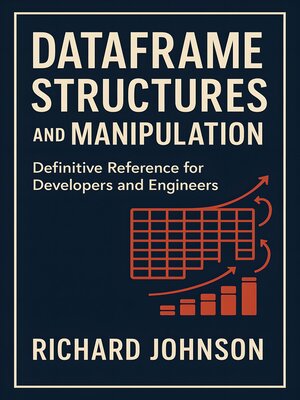DataFrame Structures and Manipulation
ebook ∣ Definitive Reference for Developers and Engineers
By Richard Johnson

Sign up to save your library
With an OverDrive account, you can save your favorite libraries for at-a-glance information about availability. Find out more about OverDrive accounts.
Find this title in Libby, the library reading app by OverDrive.



Search for a digital library with this title
Title found at these libraries:
| Library Name | Distance |
|---|---|
| Loading... |
"DataFrame Structures and Manipulation"
"DataFrame Structures and Manipulation" offers an exhaustive exploration of the conceptual foundations, practical implementations, and emerging frontiers of DataFrame technology in modern data science and engineering. Beginning with a historical evolution of tabular data structures, the book guides readers through core abstractions, formal underpinnings in relational algebra, robust schema enforcement, and advanced metadata models. The text carefully examines the impact of memory and storage choices, equipping learners to understand the trade-offs behind popular DataFrame libraries such as pandas, Apache Spark, and polars.
Delving into essential operational competencies, the book explores data parsing from diverse sources, validation, and strategies for dealing with incomplete or corrupted data. Comprehensive coverage of transformation and cleaning operations—ranging from deduplication and type normalization to sophisticated feature engineering—ensures the reader can prepare data for robust analysis. Advanced topics, such as hierarchical indexing, custom user-defined functions, window and rolling computations, and optimization for large-scale and distributed workloads, prepare practitioners to tackle both performance and scalability demands.
True to its forward-looking approach, the book addresses the integration of DataFrames into cloud-native, distributed, and real-time analytical ecosystems. Readers gain insight into best practices for ecosystem interfacing—machine learning pipelines, ETL bridges, visualization, and cross-language bindings—along with critical considerations for governance, security, and privacy in the age of data regulation. Closing chapters explore declarative interfaces, hardware acceleration, semantics enrichment, edge computing, and vital ethical dimensions, making "DataFrame Structures and Manipulation" an indispensable reference for both practitioners and researchers seeking to master the present and shape the future of DataFrame systems.







